Preliminary Analysis of the Ductility and Crack-Control Ability of Engineered Cementitious Composite with Superfine Sand and Polypropylene Fiber (SSPP-ECC)
Abstract
:1. Introduction
2. Materials and Methods
2.1. Raw Materials and Specimen Preparation
2.2. Experimental Procedure
3. Results and Discussions
3.1. Test Results
3.2. Factor Analysis
3.3. Crack-Control Ability
- With the increase of the deflection, the crack width grew increasingly faster.
- All specimens had similar initial crack deflections but the corresponding initial crack widths were different with the following order of sizes: C8 > C16 > C14 > C9> C12 > C10.
- When the maximum crack widths reached 100 μm, the deflection growths of each group were different, where the order was C10 > C12 > C14 > C16 > C9 > C8, in which the deflection growths of groups 10 and 12 were significantly larger than that of other groups.
4. Conclusions
- The initial flexural crack strength of SSPP-ECC was 4.67–6.93 MPa, the peak flexural strength was 5.60–8.07 MPa, and the flexural moduli of elasticity of SSPP-ECC were mainly between 25 and 32 GPa, in which the content of fiber and fly ash had a significant effect on the initial crack strength, while the flexural modulus of elasticity was greatly affected by the content of fiber and the sand-binder ratio.
- The content of fiber and fly ash almost completely determined the ductility of SSPP-ECC in the parameter ranges of this study, and they had an extra combined effect on the ductility as well. Furthermore, a response surface model with high accuracy was fitted in this paper to predict the yield length of SSPP-ECC.
- The ductility of SSPP-ECC was positively related to the crack-control ability and it was shown that the crack width of SSPP-ECC increased significantly with a high content of superfine sand. Finally, the mix proportions of groups 10 and 12 were recommended for SSPP-ECC based on the results of this study.
Author Contributions
Funding
Acknowledgments
Conflicts of Interest
References
- Li, V.C. Advances in ECC Research. ACI Spec. Publ. Concr. 2002, 206, 373–400. [Google Scholar]
- Fukuyama, H.; Matsuzaki, Y.; Nakano, K.; Sato, Y. Structural Performance of Beam Elements with PVA-ECC. In Proceedings of the High Performance Fiber Reinforced Cement Composites 3 (HPFRCC3), Mainz, Germany, 1999. [Google Scholar]
- Keoleian, G.A.; Kendall, A.; Dettling, J.E.; Smith, V.M.; Chandler, R.F.; Lepech, M.D.; Li, V.C. Life cycle modeling of concrete bridge design: Comparison of Engineered cementitious composite link slabs and conventional steel expansion joints. J. Infrastruct. Syst. 2005, 11, 51–60. [Google Scholar] [CrossRef]
- Li, V.C. Engineered Cementitious Composites ECC material structural and durability performance. In Concrete Construction Engineering Handbook; Nawy, E., Ed.; CRC Press: Boca Raton, FL, USA, 2008; Chapter 24. [Google Scholar]
- Rokugo, K.; Kanda, T.; Yokota, H.; Sakata, N. Applications and recommendations of high performance fiber reinforced cement composites with mmultiple fine cracking (HPFRCC) in Japan. Mater. Struct. 2009, 42, 1197–1208. [Google Scholar] [CrossRef]
- Hanif, A.; Lu, Z.; Diao, S.; Zeng, X.; Li, Z. Properties investigation of fiber reinforced cement-based composites incorporating cenosphere fillers. Constr. Build. Mater. 2017, 140, 139–149. [Google Scholar] [CrossRef]
- Meng, D.; Huang, T.; Zhang, Y.; Lee, C.-K. Mechanical behaviour of a polyvinyl alcohol fibre reinforced engineered cementitious composite (PVA-ECC) using local ingredients. Constr. Build. Mater. 2017, 141, 259–270. [Google Scholar] [CrossRef]
- Suwada, H.; Fukuyama, H. Nonlinear finite element analysis on shear failure of structural elements using high performance fiber reinforced cement composite. J. Adv. Concr. Technol. 2006, 4, 45–57. [Google Scholar] [CrossRef] [Green Version]
- Tumialan, G.; Nanni, A.; Ibell, T.; Fukuyama, H. FRP composites for strengthening civil infrastructure around the world. SAMPE J. 2002, 38, 9–15. [Google Scholar]
- Li, V.C.; Fischer, G.; Kim, Y.Y.; Lepech, M.; Qian, S.; Weimann, M.; Wang, S. Durable Link Slabs for Jointless Bridge Decks Based on Strain-hardening Cementitious Composites; Michigan Department of Transportation: Lansing, MI, USA, 2003. [Google Scholar]
- Li, V.C.; Horikoshi, T.; Ogawa, A.; Torigoe, S.; Saito, T. Micromechanics-based durability study of polyvinyl alcohol-engineered cementitious composite (PVA-ECC). ACI Mater. J. 2004, 101, 242–248. [Google Scholar]
- Li, M.; Şahmaran, M.; Li, V.C. Effect of cracking and healing on durability of engineered cementitious composites under marine environment. In Proceedings of the High Performance Fiber Reinforced Cement Composites (HPFRCC5), Mainz, Germany, 10–13 July 2007; Reinhardt, H.W., Naaman, A.E., Eds.; pp. 313–322. [Google Scholar]
- Sahmaran, M.; Li, V.C. De-icing salt scaling resistance of mechanically loaded engineered cementitious composites. Cem. Concr. Res. 2007, 37, 1035–1046. [Google Scholar] [CrossRef]
- Lin, J.-X.; Song, Y.; Xie, Z.-H.; Guo, Y.-C.; Yuan, B.; Zeng, J.-J.; Wei, X. Static and dynamic mechanical behavior of engineered cementitious composites with PP and PVA fibers. J. Build. Eng. 2020, 29, 101097. [Google Scholar] [CrossRef]
- Felekoğlu, B.; Tosun-Felekoğlu, K.; Ranade, R.; Zhang, Q.; Li, V.C. Influence of matrix flowability, fiber mixing procedure, and curing conditions on the mechanical performance of HTPP-ECC. Compos. Part. B Eng. 2014, 60, 359–370. [Google Scholar] [CrossRef]
- Zhou, J.; Shen, W.; Wang, S. Experimental study on torsional behavior of FRC and ECC beams reinforced with GFRP bars. Constr. Build. Mater. 2017, 152, 74–81. [Google Scholar] [CrossRef]
- Krishnaraja, A.R.; Kandasamy, S. Flexural performance of engineered cementitious compositelayered reinforced concrete beams. Arch. Civ. Eng. 2017, 63, 173–189. [Google Scholar] [CrossRef]
- Ismail, M.K.; Abdelaleem, B.H.; Hassan, A.A. Effect of fiber type on the behavior of cementitious composite beam-column joints under reversed cyclic loading. Constr. Build. Mater. 2018, 186, 969–977. [Google Scholar] [CrossRef]
- Yaw, C.H.; Han, J.B. The mechanical behavior of fiber reinforced PP ECC beams under reverse cyclic loading. Adv. Mater. Sci. Eng. 2014, 2014, 159790. [Google Scholar]
- Zhang, R.; Matsumoto, K.; Hirata, T.; Ishizeki, Y.; Niwa, J. Cyclic behavior of beam-column joint connections in rigid-framed bridges with reduction of transverse reinforcements by using PP-ECC. Fundam. Res. Struct. Eng. Retrosp. Prospect. 2016, 1–2, 1516–1521. [Google Scholar]
- Şahmaran, M.; Li, V.C. Durability of mechanically loaded engineered cementitious composites under highly alkaline environments. Cem. Concr. Compos. 2008, 30, 72–81. [Google Scholar] [CrossRef]
- Xiao, R.; Deng, Z.-C.; Shen, C. Properties of Ultra high performance concrete containing superfine Cement and without silica fume. J. Adv. Concr. Technol. 2014, 12, 73–81. [Google Scholar] [CrossRef] [Green Version]
- Jiang, C.; Guo, W.; Chen, H.; Zhu, Y.; Jin, C. Effect of filler type and content on mechanical properties and microstructure of sand concrete made with superfine waste sand. Constr. Build. Mater. 2018, 192, 442–449. [Google Scholar] [CrossRef]
- Taryal, M.S.; Chowdhury, M.K. Effect of superfine sand on workability and compressive strength of cement mortar and concrete. Int. J. Hous. Sci. Its Appl. 1983, 7, 165–174. [Google Scholar]
- Wu, L.; Peng, X.; Bai, G.; Yang, J. Strength and carbonation of autoclaved lime-sand concrete with superfine sand as aggregate. Mag. Concr. Res. 1995, 47, 3–10. [Google Scholar] [CrossRef]
- Yang, C.H.; Chen, K.; Wu, F.; Ye, J.X.; Liao, J.Q.; Yang, K. Study on the factors affecting the strength of new type inorganic anchoring mortar. In Proceedings of the 6th International Symposium on Cement & Concrete and CANMET/ACI International Symposium on Concrete Technology for Sustainable Development, Xian, China, 19–22 September 2006; Volumes 1 and 2, pp. 1108–1113. [Google Scholar]
- CIQ China Inspection and Quarantine. Test Methods for the Properties of Glassfibre Reinforced Cement; GB/T 15231-2008; Standardization Administration of China: Beijing, China, 2008. (In Chinese) [Google Scholar]
- Akhavan, A.; Rajabipour, F. Evaluating ion diffusivity of cracked cement paste using electrical impedance spectroscopy. Mater. Struct. 2012, 46, 697–708. [Google Scholar] [CrossRef]
- Elkefrouci, L.; Diao, B.; Peng, S.; Li, Y. Combined effect of initial curing temperature and crack width on chloride penetration in reinforced concrete beams. In Proceedings of the International Conference on Materials Applications and Engineering (ICMAE), Qingdao, China, 25–27 August 2017. [Google Scholar]

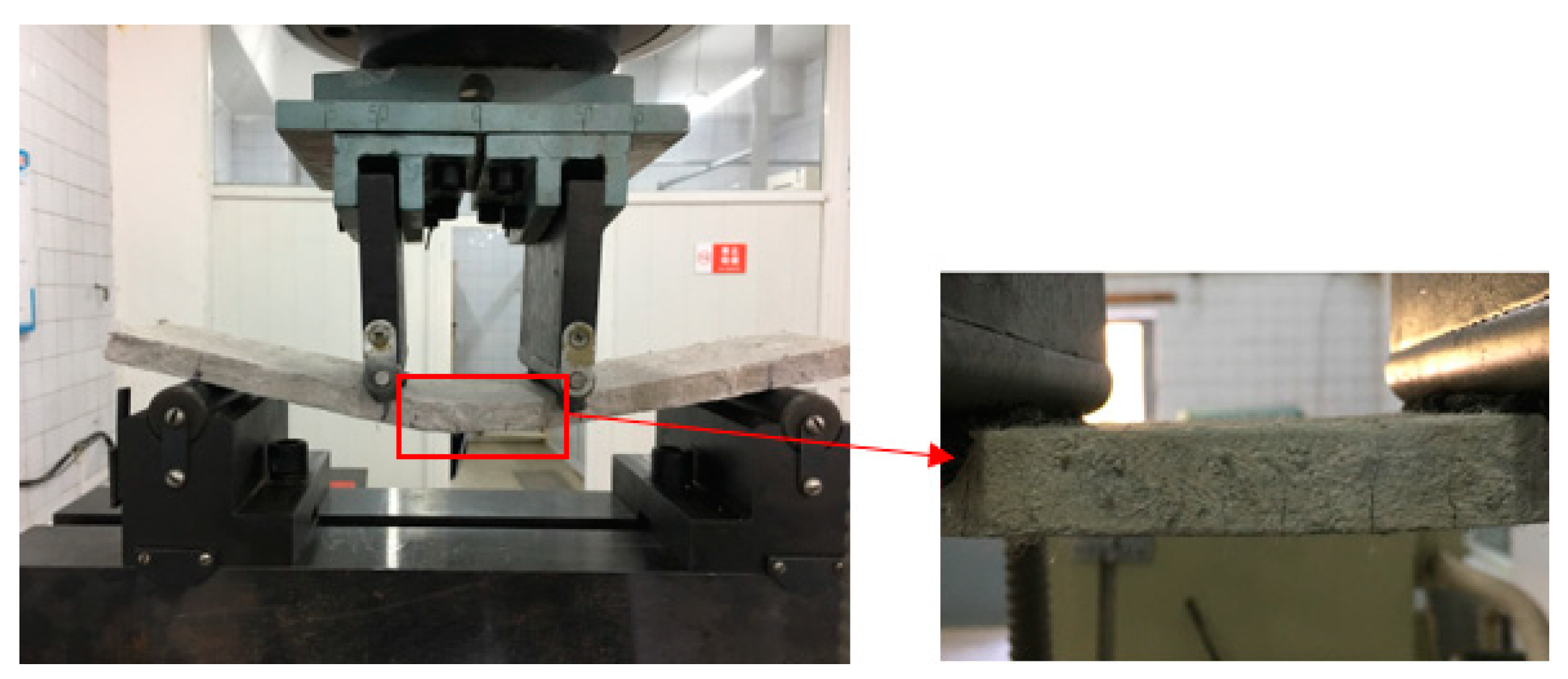
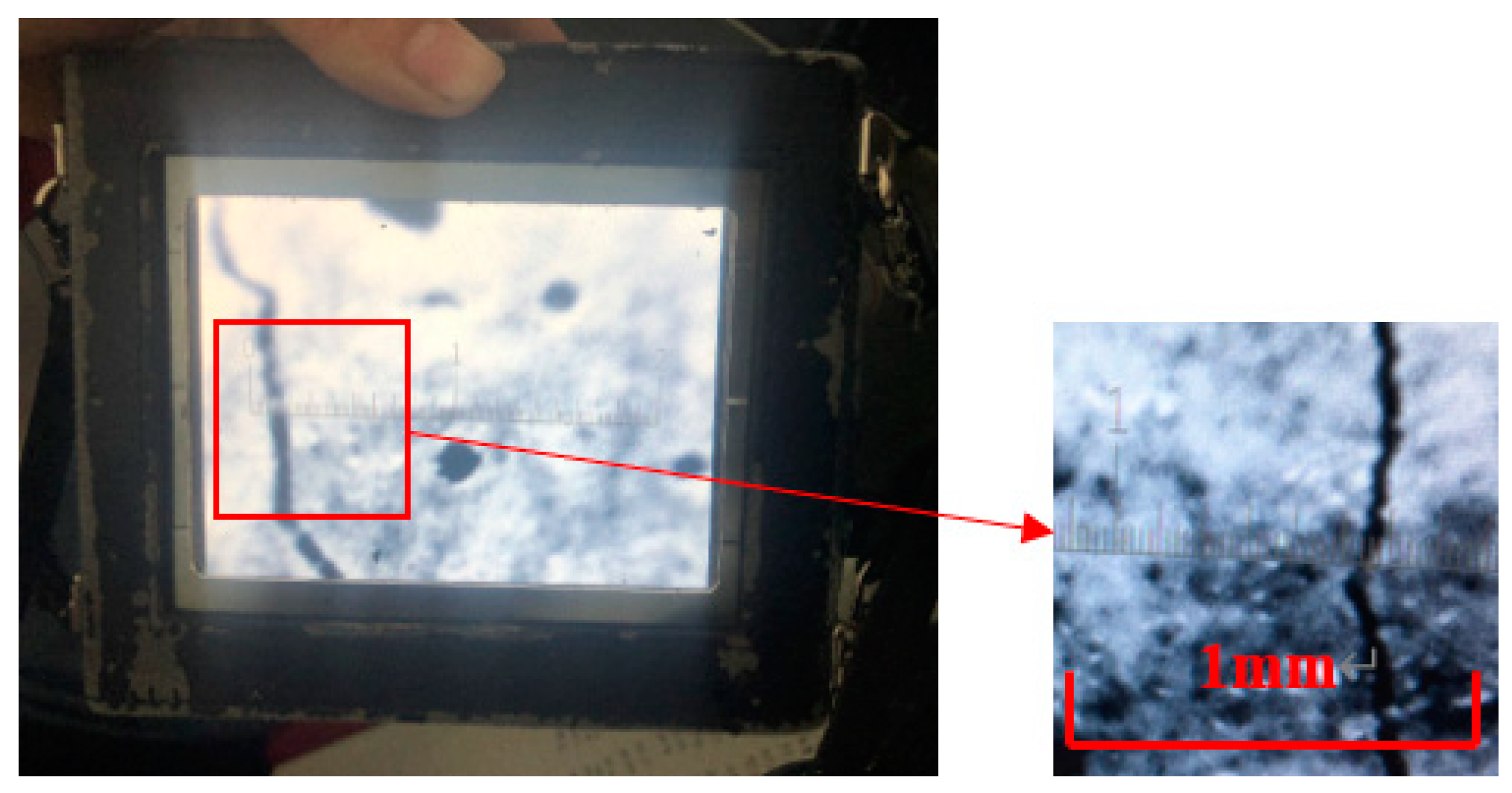
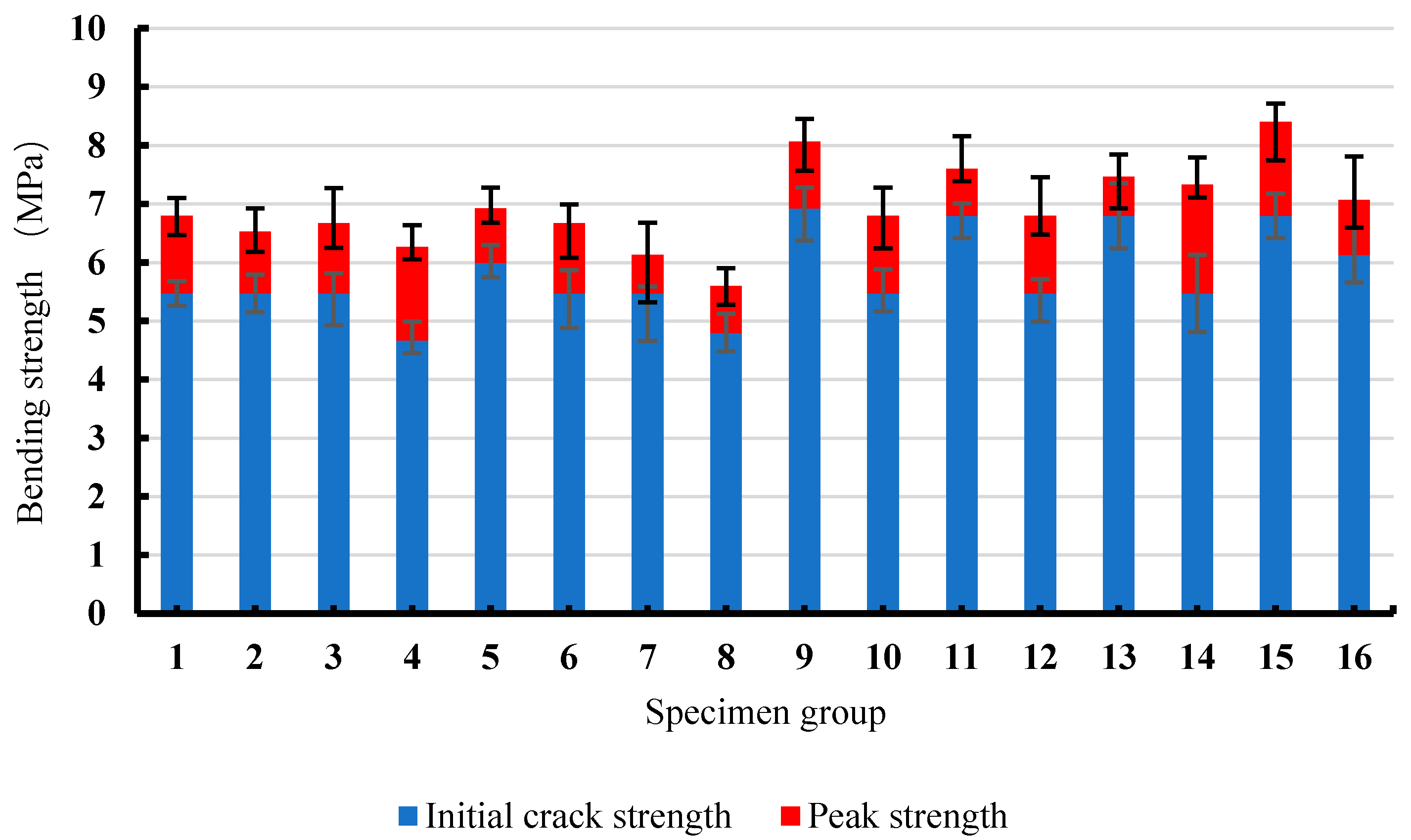

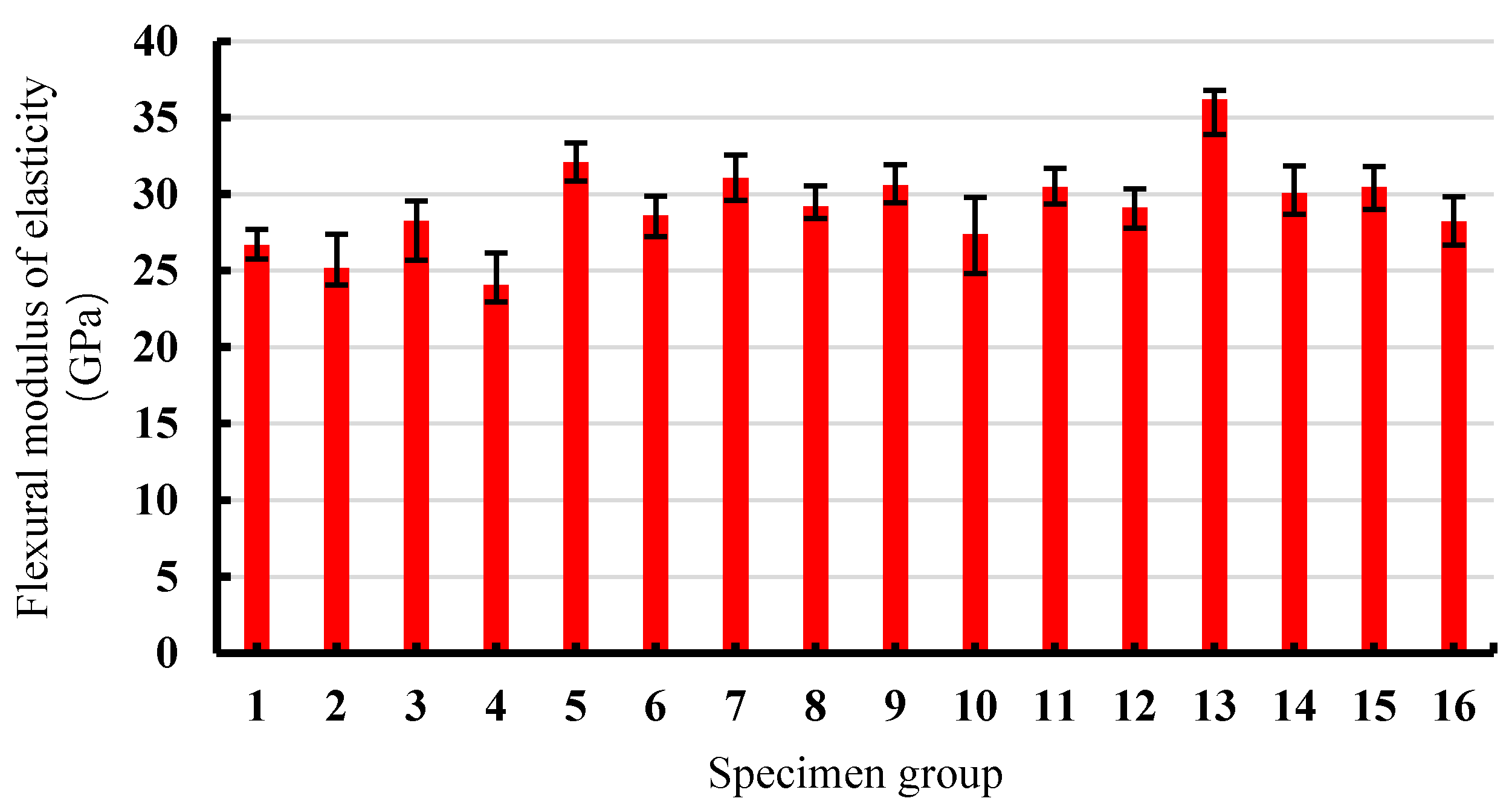
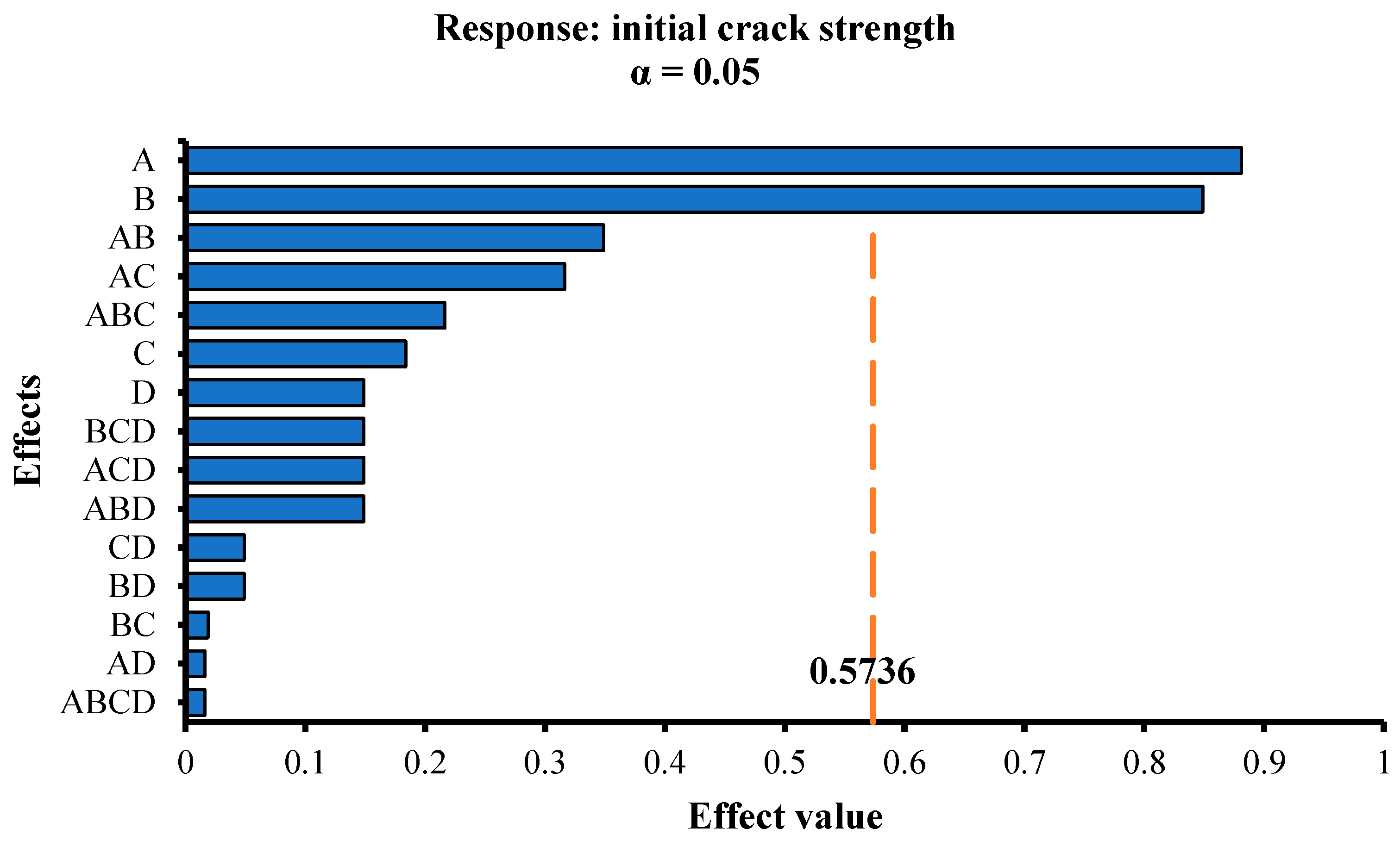
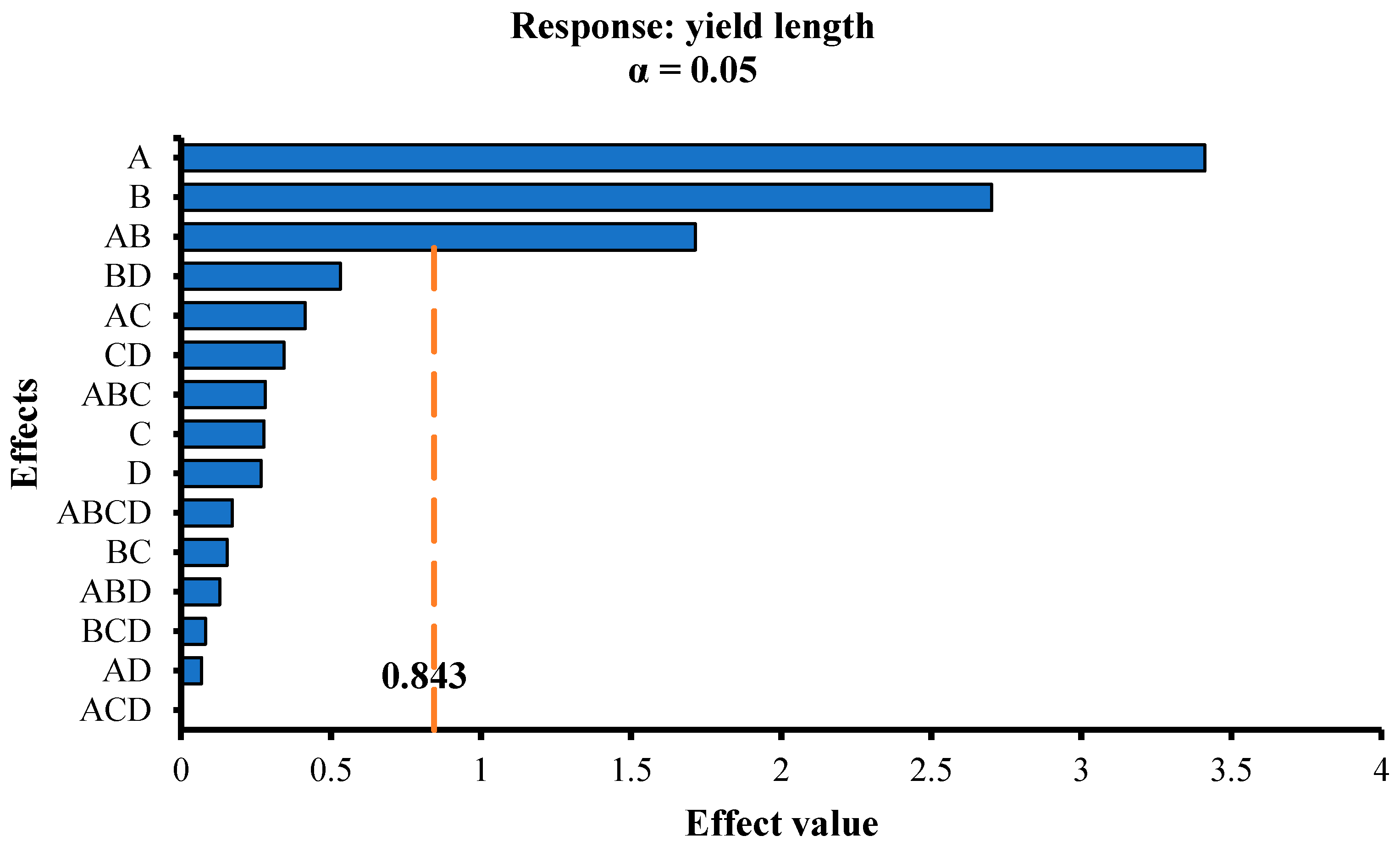

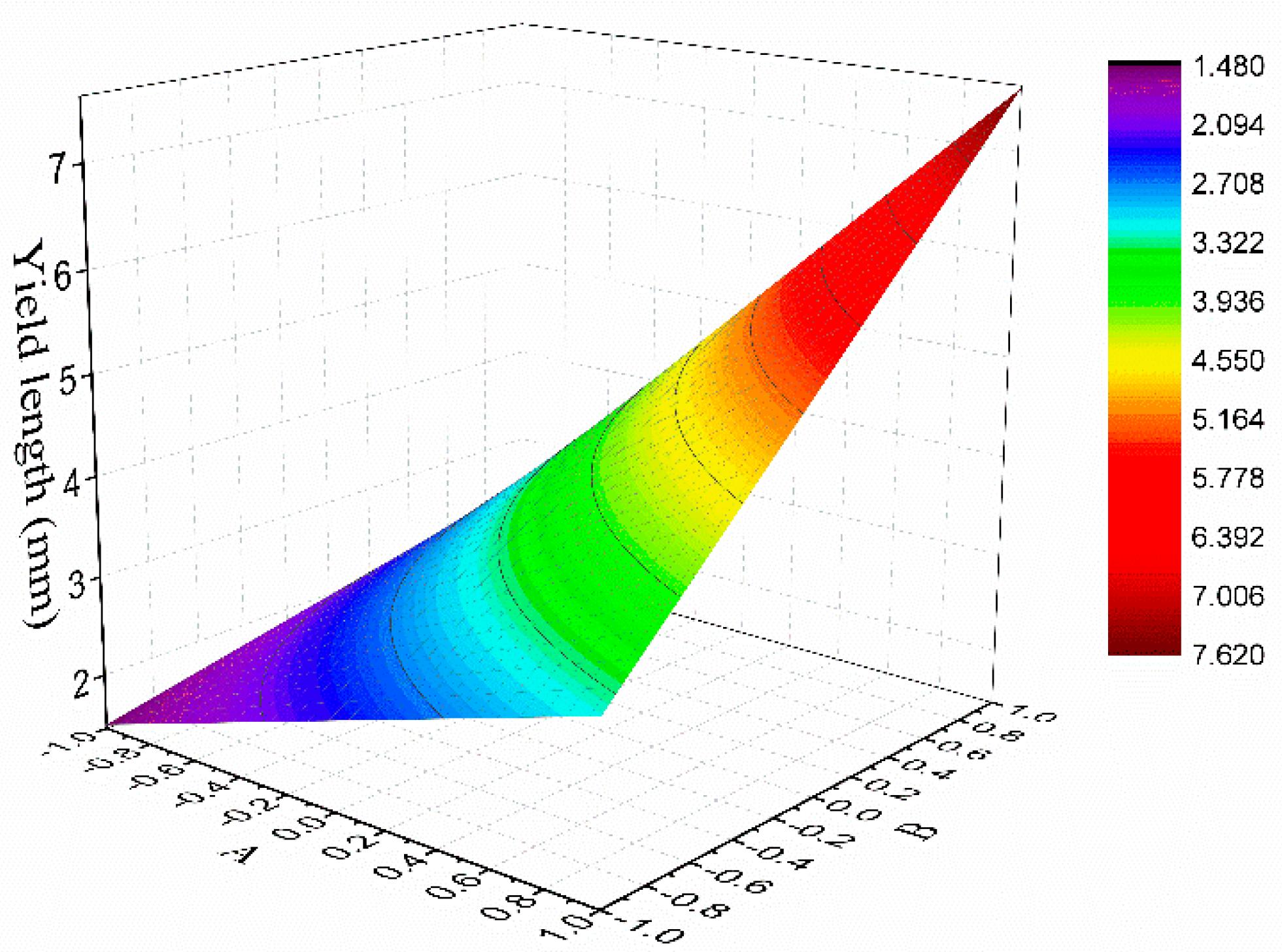

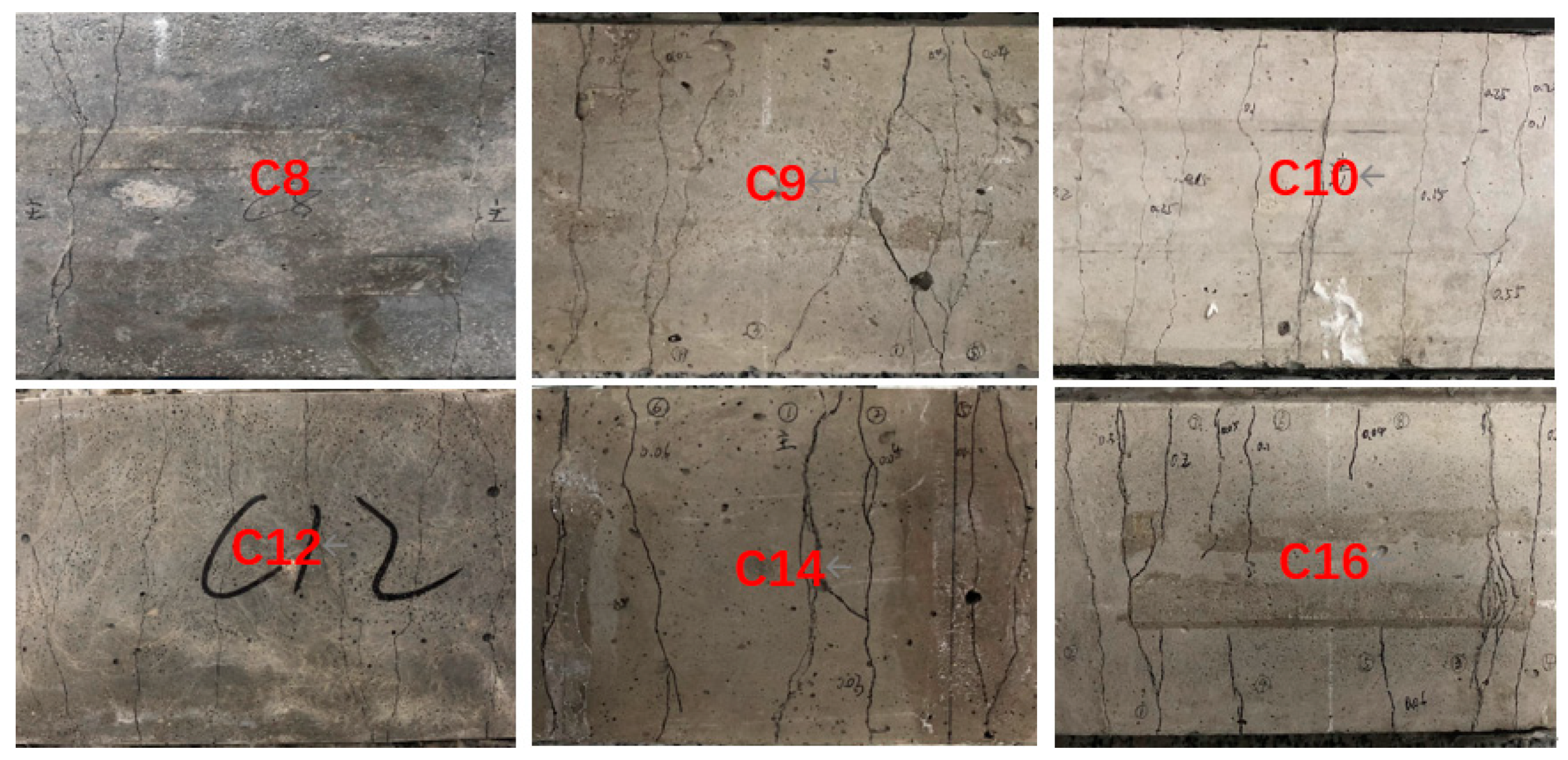
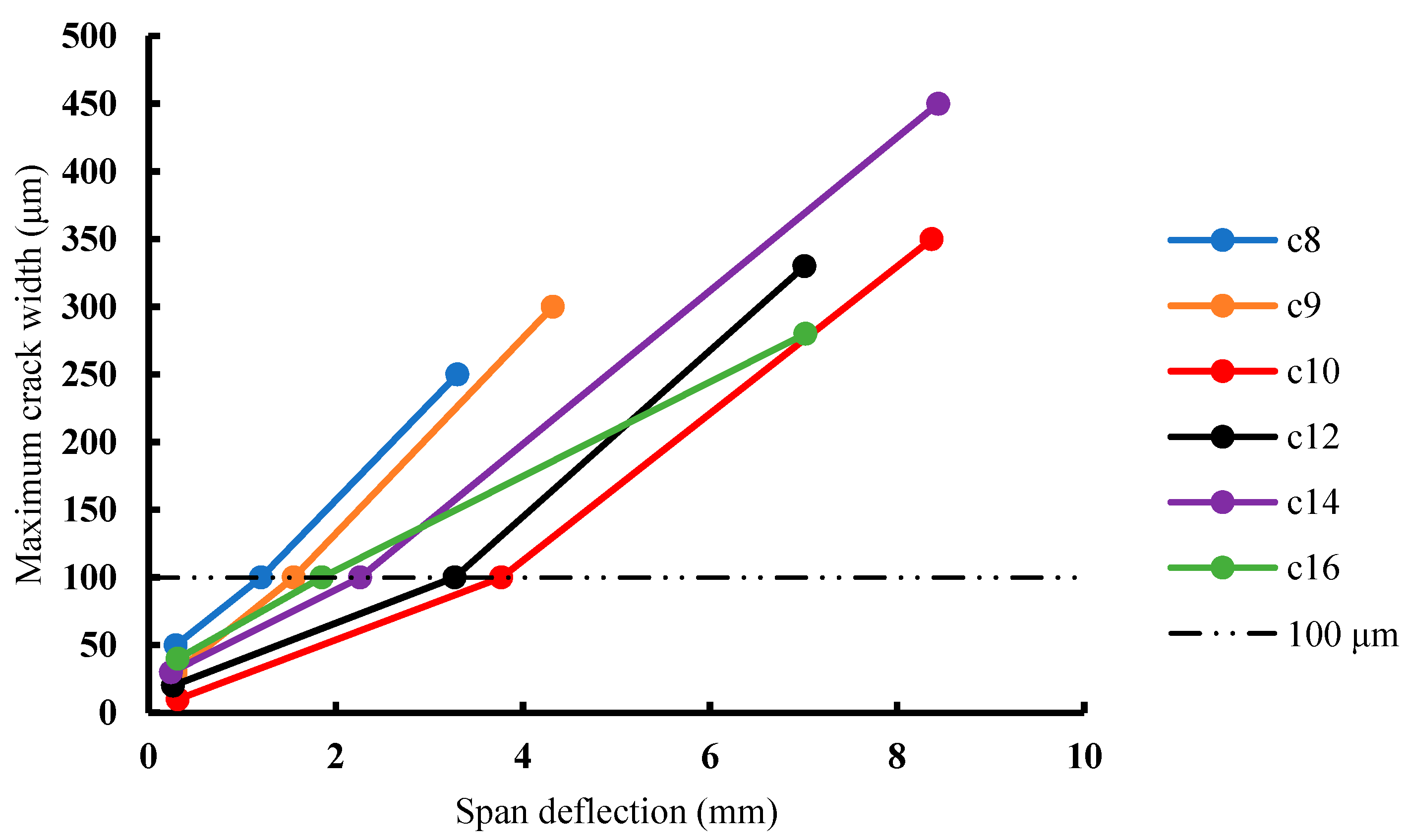
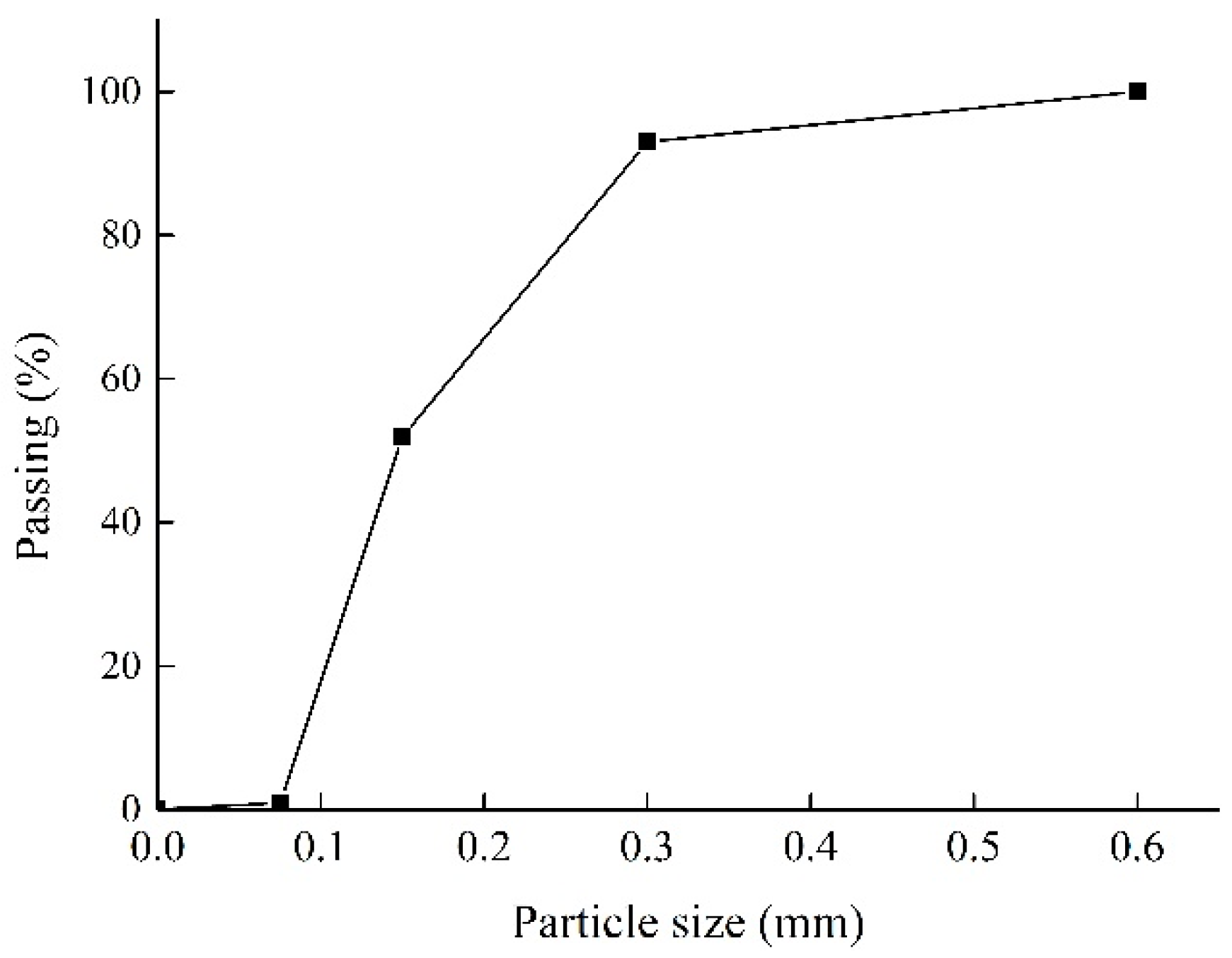
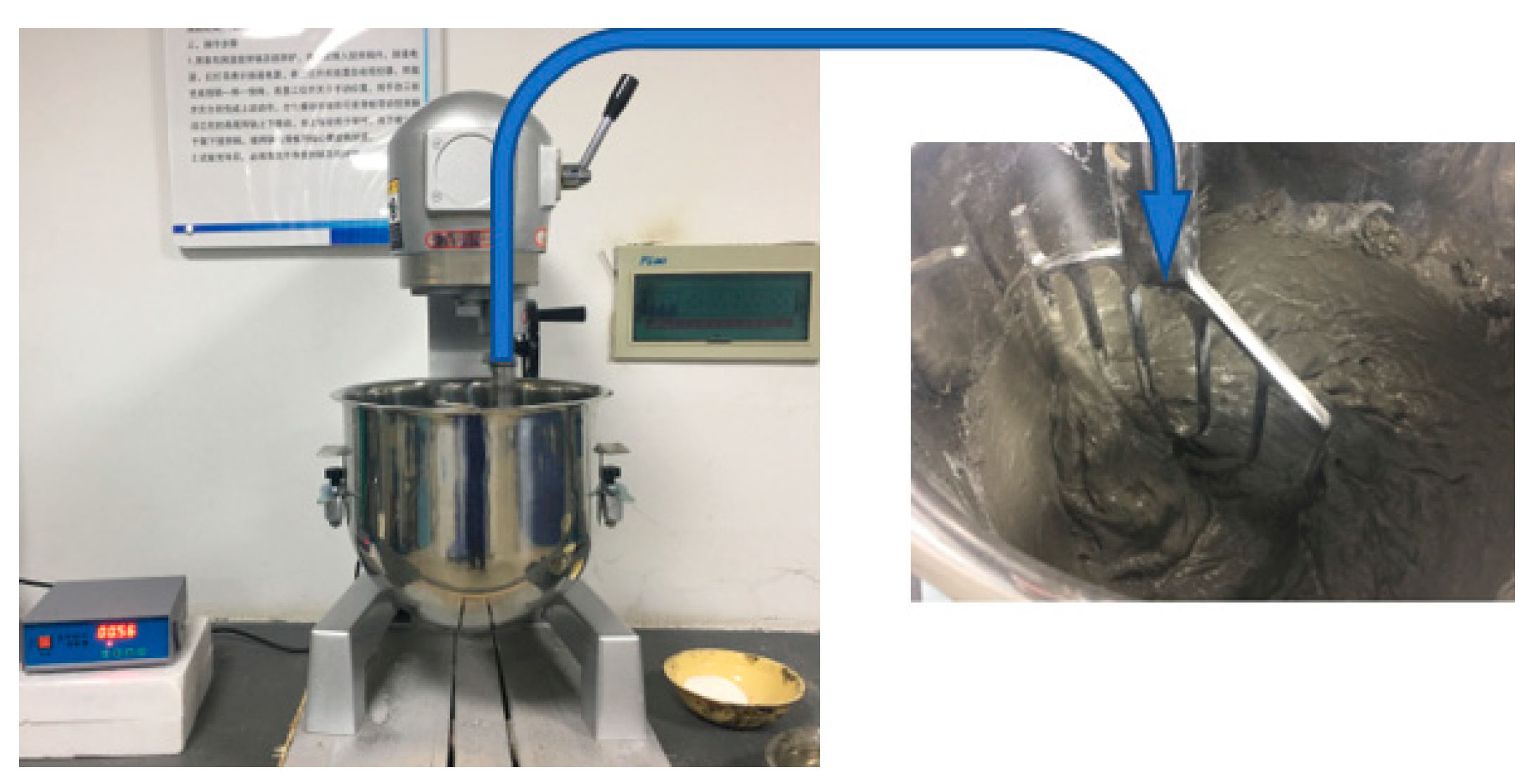
| Properties | Fly Ash | Cement |
|---|---|---|
| Specific gravity | 2.13 | 3.10 |
| Surface area ratio (m2/kg) | 420 | 370 |
| SiO2 (%) | 50.37 | 21.11 |
| CaO (%) | 3.01 | 60.38 |
| Al2O3 (%) | 27.62 | 6.04 |
| MgO (%) | 1.85 | 1.08 |
| Fe2O3 (%) | 7.83 | 2.56 |
| Loss on ignition (%) | 7.20 | 1.02 |
| Water ratio (%) | 0.80 | 0.11 |
| Factors | Low (-) | High (+) |
|---|---|---|
| A (volume content of fiber, %) | 1.5 | 2.0 |
| B (percentage of fly ash, %) | 20 | 60 |
| C (water–binder ratio) | 0.3 | 0.35 |
| D (sand–binder ratio) | 0.5 | 1.0 |
| No. | Cement (kg/m3) | Fly Ash (kg/m3) | Water (kg/m3) | Sand (kg/m3) | HRWR (kg/m3) | Fiber (%) |
|---|---|---|---|---|---|---|
| 1 | 960 | 240 | 360 | 600 | 11.3 | 1.5 |
| 2 | 480 | 720 | 360 | 600 | 5.7 | 1.5 |
| 3 | 960 | 240 | 420 | 600 | 11.4 | 1.5 |
| 4 | 480 | 720 | 420 | 600 | 5.7 | 1.5 |
| 5 | 960 | 240 | 360 | 1200 | 11.5 | 1.5 |
| 6 | 480 | 720 | 360 | 1200 | 5.6 | 1.5 |
| 7 | 960 | 240 | 420 | 1200 | 11.4 | 1.5 |
| 8 | 480 | 720 | 420 | 1200 | 5.7 | 1.5 |
| 9 | 960 | 240 | 360 | 600 | 11.3 | 2.0 |
| 10 | 480 | 720 | 360 | 600 | 5.6 | 2.0 |
| 11 | 960 | 240 | 420 | 600 | 11.4 | 2.0 |
| 12 | 480 | 720 | 420 | 600 | 5.7 | 2.0 |
| 13 | 960 | 240 | 360 | 1200 | 11.5 | 2.0 |
| 14 | 480 | 720 | 360 | 1200 | 5.3 | 2.0 |
| 15 | 960 | 240 | 420 | 1200 | 11.4 | 2.0 |
| 16 | 480 | 720 | 420 | 1200 | 5.4 | 2.0 |
| Initial Crack Strength | Yield Length | Flexural Modulus of Elasticity |
|---|---|---|
| Inspection value: 0.5736 A: +0.8812 B: ‒0.8488 | Inspection value: 0.843 A: +3.411 B: +2.701 AB: +1.7137 | Inspection value: 2.969 D: +3.026 B: ‒2.999 |
| – | – |
| Responses | Fitting Equations | R2 (%) | R2adj (%) |
|---|---|---|---|
| Initial crack strength | YI = 5.7931 + 0.4406A − 0.4244B − 0.0919C + 0.0744D − 0.1744AB + 0.1581AC − 0.0081AD − 0.0094BC + 0.0244BD + 0.0244CD | 94.01 | 82.03 |
| Yield length | YY = 3.6894 + 1.7056A + 1.3506B − 0.1381C − 0.1331D + 0.8569AB − 0.2069AC − 0.0344AD − 0.0769BC + 0.2656BD + 0.1719CD | 99.42 | 98.26 |
| Flexural modulus of elasticity | YF = 29.231 + 1.091A − 1.499B − 0.3694C + 1.513D − 0.1219AB − 0.3694AC − 0.5894AD + 0.2906BC − 0.2194BD − 0.6269CD | 90.81 | 72.42 |
| Diameter (μm) | Length (mm) | Density (g/cm3) | Young’s Modulus (GPa) | Nominal Strength (MPa) | Elongation (%) |
|---|---|---|---|---|---|
| 30 | 12 | 0.91 | 3.5 | 500 | 20 |
© 2020 by the authors. Licensee MDPI, Basel, Switzerland. This article is an open access article distributed under the terms and conditions of the Creative Commons Attribution (CC BY) license (http://creativecommons.org/licenses/by/4.0/).
Share and Cite
Zhu, Z.; Tan, G.; Zhang, W.; Wu, C. Preliminary Analysis of the Ductility and Crack-Control Ability of Engineered Cementitious Composite with Superfine Sand and Polypropylene Fiber (SSPP-ECC). Materials 2020, 13, 2609. https://doi.org/10.3390/ma13112609
Zhu Z, Tan G, Zhang W, Wu C. Preliminary Analysis of the Ductility and Crack-Control Ability of Engineered Cementitious Composite with Superfine Sand and Polypropylene Fiber (SSPP-ECC). Materials. 2020; 13(11):2609. https://doi.org/10.3390/ma13112609
Chicago/Turabian StyleZhu, Zhiqing, Guojin Tan, Weiguang Zhang, and Chunli Wu. 2020. "Preliminary Analysis of the Ductility and Crack-Control Ability of Engineered Cementitious Composite with Superfine Sand and Polypropylene Fiber (SSPP-ECC)" Materials 13, no. 11: 2609. https://doi.org/10.3390/ma13112609





